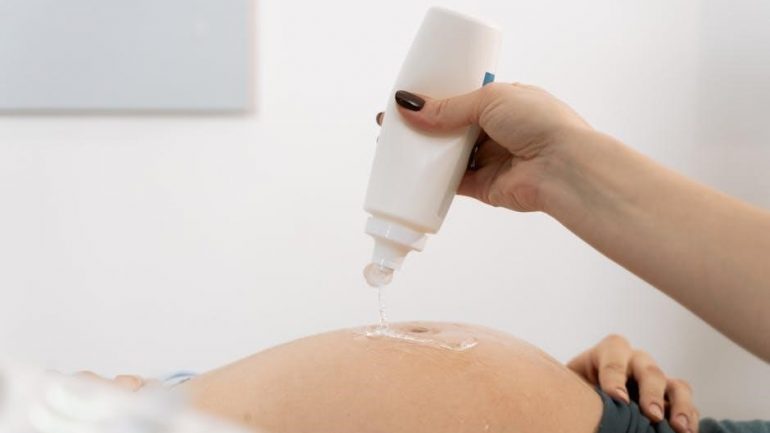Hunter Manual Thermostat⁚ A Comprehensive Guide
This guide provides a complete overview of Hunter manual thermostats, covering installation, wiring, settings, troubleshooting, and maintenance. Learn about the simple operation and ease of use, ensuring comfortable temperature control in your home. Safety precautions and accessing manufacturer support are also detailed.
Hunter manual thermostats offer a straightforward approach to temperature regulation, ideal for those seeking simple and reliable control without the complexities of programmable features. These thermostats provide a basic interface for adjusting the temperature up or down, typically using a dial or simple buttons for precise adjustments. Unlike their programmable counterparts, Hunter manual thermostats lack sophisticated scheduling options or advanced functionalities. They are designed for ease of use and are generally cost-effective solutions for heating and cooling systems. Their simplicity makes them a popular choice for users who prefer direct control and minimal technical interaction. The absence of electronic programming simplifies both installation and maintenance, reducing the potential for technical issues.
Many Hunter manual thermostat models are compatible with various heating and cooling systems, including gas, oil, electric, and hot water systems. However, compatibility can vary depending on the specific model and system configuration. It’s essential to consult the product specifications and installation guide for your specific Hunter manual thermostat model to ensure proper functionality and compatibility with your existing HVAC system before installation. This ensures a seamless integration and avoids potential compatibility problems.
Installation Process⁚ A Step-by-Step Guide
Before beginning, always switch off the power to your heating and cooling system at the breaker box to prevent electrical shock. Carefully remove your old thermostat, taking note of the wire connections. Consult the wiring diagram included with your new Hunter manual thermostat; this diagram will show the correct wire placement for your specific system. Match the wire colors from your old thermostat to the corresponding terminals on the new thermostat. Securely connect each wire to its designated terminal, ensuring a tight connection to prevent loose wires and potential malfunctions. Once all wires are connected, carefully mount the new thermostat to the wall plate using the provided screws. Ensure the thermostat is level and securely attached. After installation, carefully re-attach the cover plate.
Finally, switch the power back on at the breaker box. The thermostat should power on, and you should be able to adjust the temperature. If the thermostat doesn’t power on, double-check all wire connections and ensure the power is restored to the system correctly. If problems persist, refer to the troubleshooting section in the user manual or contact Hunter customer support. Remember that improper installation can void any warranty. Always follow the instructions provided with the specific Hunter manual thermostat model you are installing. If you are unsure about any aspect of the installation process, consider consulting a qualified HVAC technician to avoid potential damage or safety hazards.
Connecting the Wires⁚ A Detailed Explanation
Connecting the wires correctly is crucial for the proper functioning of your Hunter manual thermostat. Before starting, always turn off the power to your HVAC system at the breaker box. Carefully remove the old thermostat and note the wire connections. Your new thermostat should include a wiring diagram; use this as your guide. Common wire colors include red (R) for heating, green (G) for fan, yellow (Y) for cooling, and white (W) for auxiliary heat. However, wire colors may vary depending on your system, so carefully compare your old thermostat’s wiring to the diagram. Each wire should be firmly connected to the corresponding terminal on the new thermostat. Avoid loose connections, as these can cause malfunctions or safety hazards.
Pay close attention to the wiring diagram provided with your specific Hunter thermostat model. Some models might have additional terminals for specific functionalities like emergency heat or a heat pump. Connect these wires according to the diagram’s instructions. If you’re uncertain about any wire connection, consult the user manual or seek assistance from a qualified HVAC technician. Once all wires are securely connected, carefully tuck them away to avoid obstructing the thermostat. After completing the wire connections, carefully mount the thermostat onto the wall plate. Before turning the power back on, visually inspect all connections to ensure everything is secure and correctly wired. Improper wiring can lead to system failure or even safety hazards.
Understanding Thermostat Settings and Options
Hunter manual thermostats, while straightforward, offer several settings to optimize comfort and energy efficiency. The primary setting is the temperature dial, allowing you to adjust the desired temperature. A simple turn clockwise increases the temperature, while counterclockwise decreases it. Many models include a system switch, typically labeled “Heat,” “Off,” and “Cool,” allowing you to select the desired mode. Some Hunter manual thermostats incorporate a fan switch, enabling you to run the fan continuously or only when the heating or cooling system is operating. This setting influences air circulation and comfort levels. Understanding these settings is key to effectively managing your home’s temperature.
While Hunter manual thermostats lack the advanced programmable features of digital models, their simplicity ensures ease of use. The absence of complex menus or digital displays makes them accessible to all users, regardless of technical expertise. However, the limited options mean less control over precise temperature regulation compared to programmable thermostats. For instance, you can’t set specific temperature schedules for different times of the day or days of the week. The focus is on straightforward temperature control, offering a balance between simplicity and functionality. Familiarize yourself with the specific settings available on your Hunter manual thermostat model by carefully reading the user manual. This will help you maximize its effectiveness in maintaining a comfortable home environment.
Troubleshooting Common Issues
Despite their simplicity, Hunter manual thermostats can occasionally present minor issues. If your heating or cooling system isn’t responding, first verify that the thermostat is set to the correct mode (“Heat,” “Cool,” or “Off”). Ensure the system switch is properly positioned and not stuck. Check the circuit breaker or fuse box to confirm power is supplied to both the thermostat and the HVAC system. A tripped breaker or blown fuse is a common cause of malfunction. If power is confirmed, visually inspect the wiring connections at the thermostat to ensure they are secure and properly seated. Loose or corroded connections can interrupt the electrical signal.
If the system still doesn’t function correctly, the problem may lie outside the thermostat. Check the furnace or air conditioning unit itself for any error codes or visible issues. Consult your HVAC system’s manual for troubleshooting steps or contact a qualified HVAC technician for professional assistance; If the thermostat’s temperature dial feels stiff or unresponsive, it might require cleaning or lubrication. Never attempt to disassemble the thermostat yourself; instead, refer to the manufacturer’s instructions or seek professional help. Remember to always turn off the power to the thermostat and HVAC system before performing any checks or adjustments to ensure your safety.
Armchair Programming⁚ Convenience and Ease of Use
Unlike programmable thermostats requiring on-the-wall adjustments, Hunter manual thermostats prioritize simplicity. Their straightforward design eliminates complex programming menus and digital interfaces. This translates to ease of use for all ages and technical skill levels. The absence of intricate settings streamlines temperature adjustments, making it effortless to maintain a comfortable indoor environment. Simply turn the dial to your desired temperature, and the system responds accordingly. This intuitive operation makes Hunter manual thermostats ideal for users who prefer a no-frills approach to climate control.
The lack of complex programming also minimizes the potential for errors or confusion. There are no confusing schedules to set or digital displays to decipher. This user-friendly design eliminates the learning curve often associated with programmable models. For individuals seeking simple, reliable, and convenient temperature control without the complexities of digital interfaces, the straightforward functionality of the Hunter manual thermostat offers a welcome alternative. Its ease of use makes it a practical choice for homes where simple, effective climate management is paramount, eliminating the frustration and hassle of navigating complex settings.
Safety Precautions During Installation
Prior to commencing any installation work on your Hunter manual thermostat, always prioritize safety. Begin by switching off the power supply to your heating and cooling system at the breaker box. This crucial step prevents electrical shocks and ensures a safe working environment. Failure to disconnect the power could result in serious injury or damage to the equipment; Before handling any wiring, verify that the power is indeed off using a voltage tester to confirm the absence of electrical current.
When working with wiring, take extra care to avoid any accidental short circuits. Use insulated tools and avoid touching bare wires whenever possible. If you are uncertain about any aspect of the wiring process, consult a qualified electrician to ensure correct installation and prevent potential hazards. Correctly identifying and connecting the wires is critical for the safe and proper operation of the thermostat and associated HVAC equipment. Improper wiring can lead to malfunction, damage, or even fire hazards.
Pay close attention to the wiring diagram provided in your Hunter manual thermostat’s instruction manual. Ensure that all connections are secure and properly insulated to prevent accidental contact and short circuits. After completing the installation, always double-check your work before restoring power to the system. Remember, safety is paramount during any electrical installation.
Maintaining Your Hunter Manual Thermostat
Regular maintenance of your Hunter manual thermostat will ensure its longevity and optimal performance. Begin by periodically cleaning the thermostat’s faceplate. Gently wipe it with a soft, damp cloth to remove dust and debris. Avoid using harsh chemicals or abrasive cleaners that could damage the finish. Regular cleaning prevents the accumulation of dirt that might interfere with the display or buttons. This simple step enhances readability and responsiveness of the unit.
Inspect the connections to ensure they remain secure. Loose wires can lead to malfunctions or inaccurate temperature readings. If you notice any loose or damaged wires, it is recommended to consult a qualified technician for repair or replacement. Do not attempt to repair wiring unless you possess the necessary expertise and safety precautions are strictly followed. Incorrect repairs can create serious safety hazards.
While Hunter manual thermostats are generally low-maintenance, occasional checks will prevent potential problems. By following these simple maintenance steps, you will ensure your thermostat continues to operate efficiently and accurately, providing reliable temperature control for your home for many years to come. This proactive approach will minimize the risk of unexpected malfunctions or repairs.
Accessing Manufacturer Support and Resources
Hunter provides several avenues for accessing support and resources related to their manual thermostats. Their website is a valuable starting point, offering comprehensive manuals, troubleshooting guides, and frequently asked questions (FAQs). These resources often include detailed diagrams and step-by-step instructions, addressing common installation and operational issues. The website may also provide contact information for customer service representatives.
If you require immediate assistance or have a more complex problem, contacting Hunter’s customer support directly is advisable. Their phone number and email address are typically found on their website’s contact page. Be prepared to provide your thermostat model number when contacting support, as this information helps them quickly identify the specific model and provide tailored assistance. Keep your purchase receipt or proof of purchase handy, as this may be required for warranty claims.
In addition to the official website and direct contact, online forums and communities dedicated to home improvement and HVAC systems can be helpful. These platforms often have users who share experiences and solutions related to Hunter thermostats. Remember to exercise caution when using online forums and only follow advice from reputable sources. Always prioritize official documentation and manufacturer support for accurate information and safe troubleshooting procedures.


